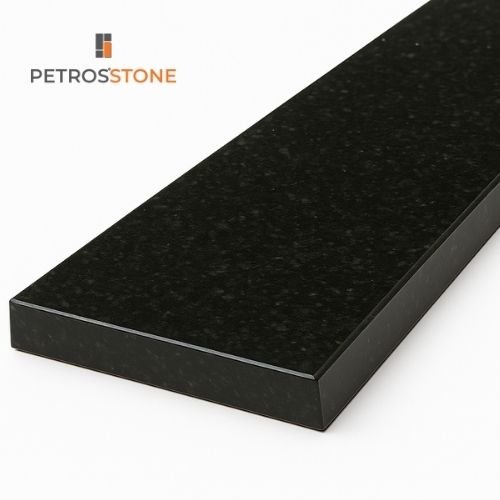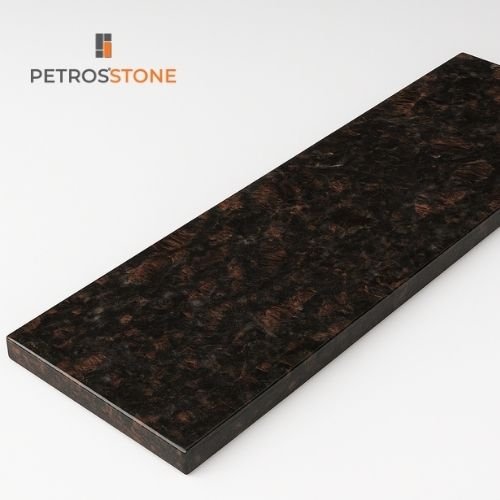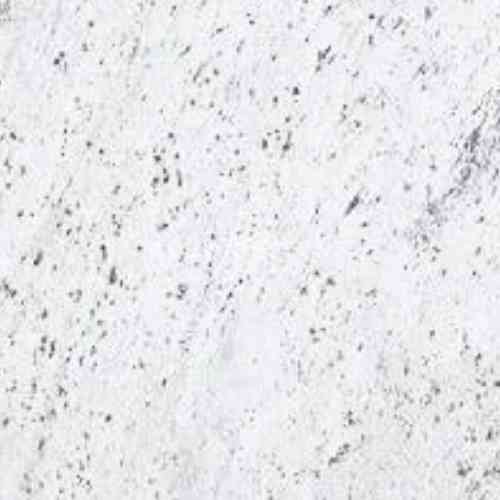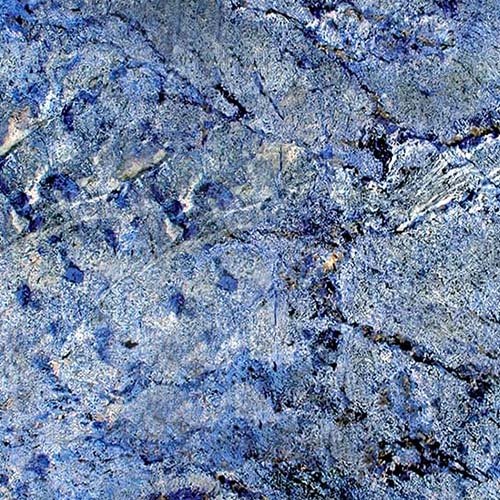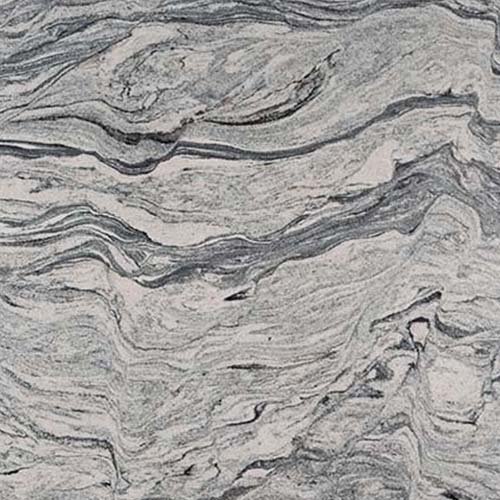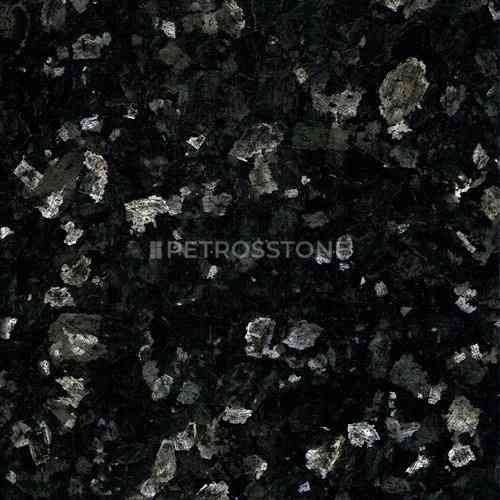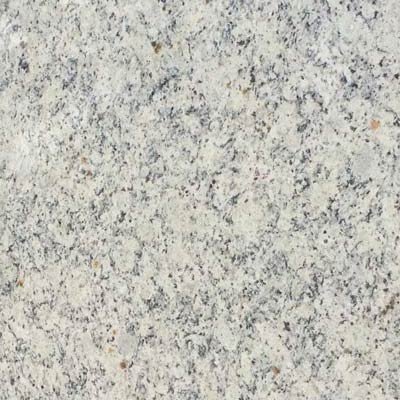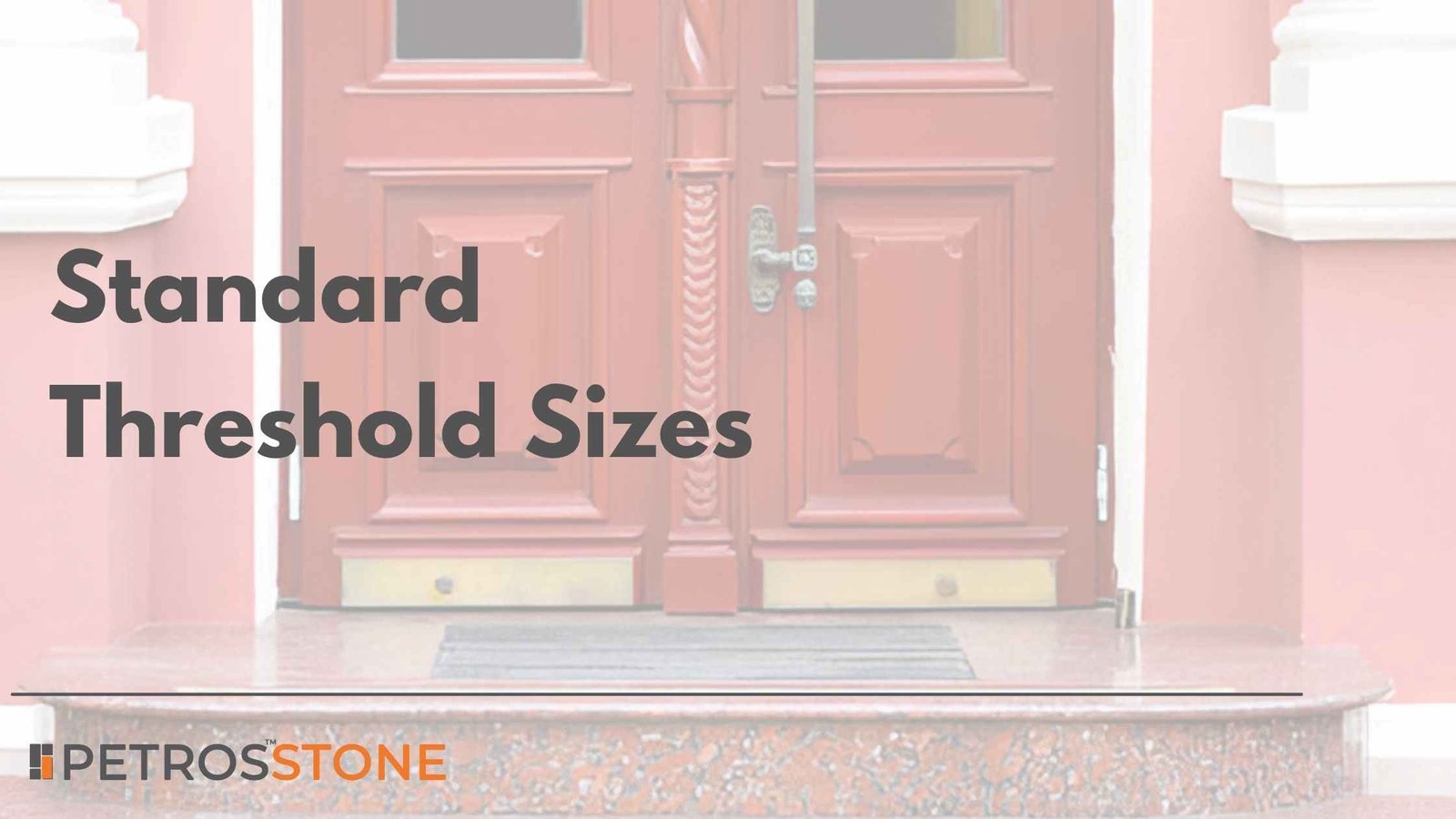
Whether you are constructing a new home, renovating an existing space, or even just replacing worn-out parts of the interior of your building, there is one small feature that gets commonly overlooked, i.e, the threshold. It is a narrow strip at the bottom of your doorway that plays a more surprisingly big role than it appears.
From transitioning one floor to another to preventing water from coming inside your building, thresholds have both functional and aesthetic purposes.
The four most common threshold sizes are 4″ x 36“, 5″ x 36″, 6″ x 36″, 6″ x 72” and cost on average from USD 8 to USD 30, depending on various factors.
In this article, we will guide you through everything you need to know about thresholds—from their functional role in protecting your home to their contribution to interior style. You’ll learn about different materials, sizes, and price ranges, along with tips on selecting the right option for durability and aesthetics.
Table Of Contents
- Why is Threshold Important in Your Space
- Standard Threshold Sizes
- Standard Thickness of Stone Thresholds
- Popular Materials for Stone Thresholds
- Marble Thresholds
- Granite Thresholds
- Limestone Thresholds
- Quartzite Thresholds
- Price List of Stone Thresholds
- Factors to Consider When Choosing a Threshold For Home
- Get Some Installation Tips
- Where to Buy?
- FAQs
- Summary
- Key Takeaways
Why is Threshold Important in Your Space
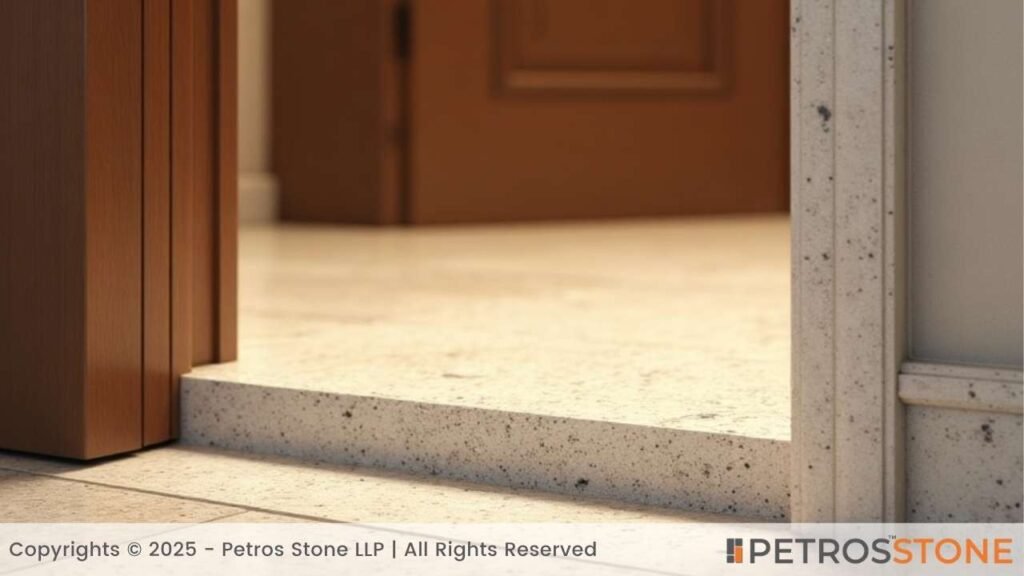
You might glance at this little piece of stone at your doorway and think, ‘Just a simple slab, right?’ But actually, it’s way more than that.
Doorways receive a lot of traffic, and the edges of flooring can end up with chips, cracks, and yes, water getting in. A stone threshold serves as a tough, practical barrier for those compromised edges, which gives it protection from life’s daily wear and tear, especially near bathrooms, showers, or any place where moisture and dirt tend to hang out
And let’s not forget the style points. A stone threshold can either blend in perfectly with the whole design, or stand out in its discreet textures and veining. Additionally, this is a small detail with an unexpectedly big impact on your space’s overall vibe.
For exhaustive details on interior door thresholds, refer to this article.
Standard Threshold Sizes
Carrara Quartz Stone Threshold
Beige Quartz Stone Threshold
Black Quartz Stone Threshold
Grey Quartz Stone Threshold
Verde Ubatuba Granite Threshold
Tan Brown Granite Threshold
Thresholds can easily be found readymade in several standard sizes. Plus, it can also be customized on demand. Below are the most typical/standard sizes you will find for residential use:
- Width: 2 – 6 inches wide, depending on the door frame and the flooring transition.
- Length: Typically the same length as the door opening, which will be 32″, 36″, or 48″ for standard doors.
- Height (or rise): Most thresholds are adjustable in height or vary from a ½” to 1″ rise.
NOTE: The above sizes accommodate typical door dimensions and flooring differences while minimizing hazard.
Standard Thickness of Stone Thresholds
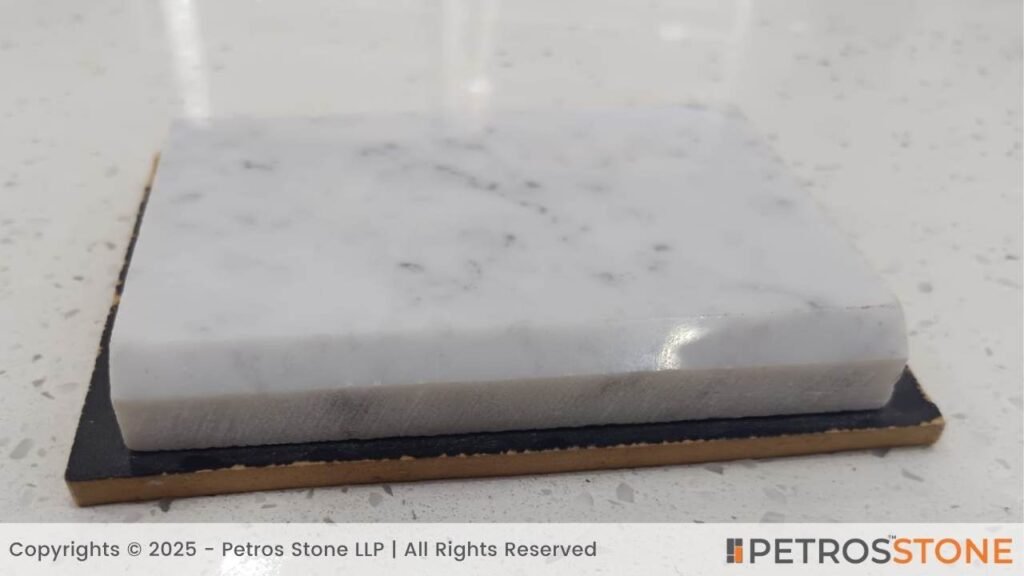
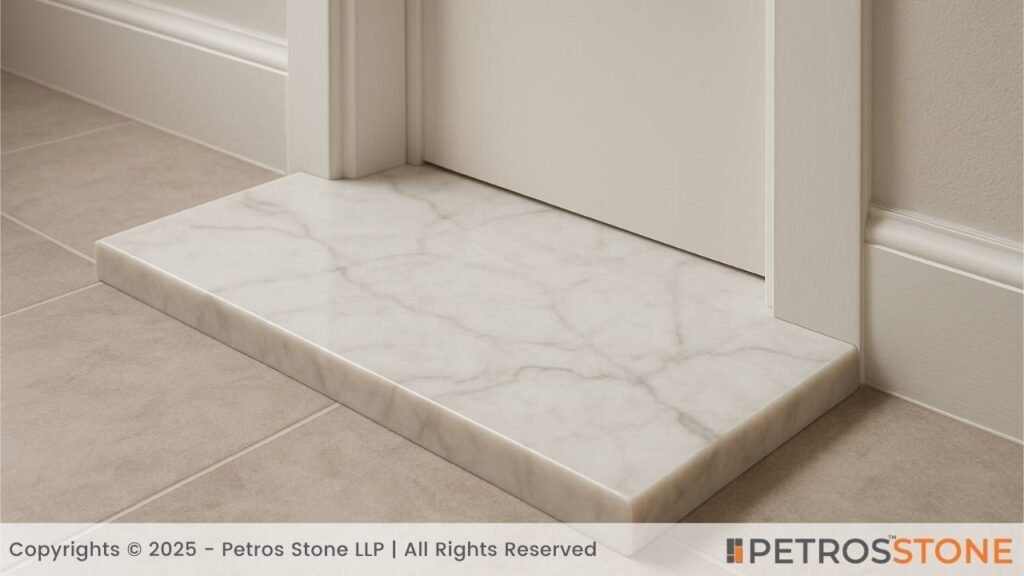
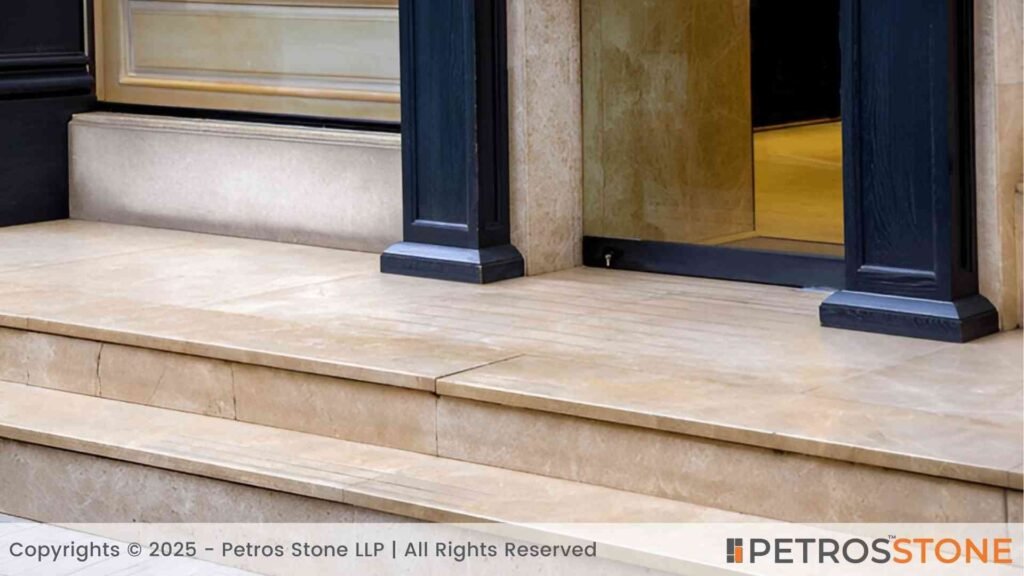
When it comes to stone thresholds, thickness is a point to consider as it plays a key role in durability and how the piece aligns with surrounding floors. Standard stone thresholds usually come in:
- ⅝ inch (16 mm)
- ¾ inch (20 mm)
- 1 inch (25 mm)
Popular Materials for Stone Thresholds
Let’s take a look at some of the most common stone choices for thresholds:
Marble Thresholds

These white shiny slabs are beautiful and classic. Marble is generally used in bathrooms, foyers, or aesthetic applications. Some of the popular types of marble used for thresholds are white Carrara and black Nero Marquina. It’s worth noting, though, that marble stains and scratches easily compared to harder stones.
Pros
- Elegant
- Timeless
- Great for aesthetic spaces
Cons
- Can stain easily
- Can scratch easily
For deeper insights, you can read this article.
Granite Thresholds
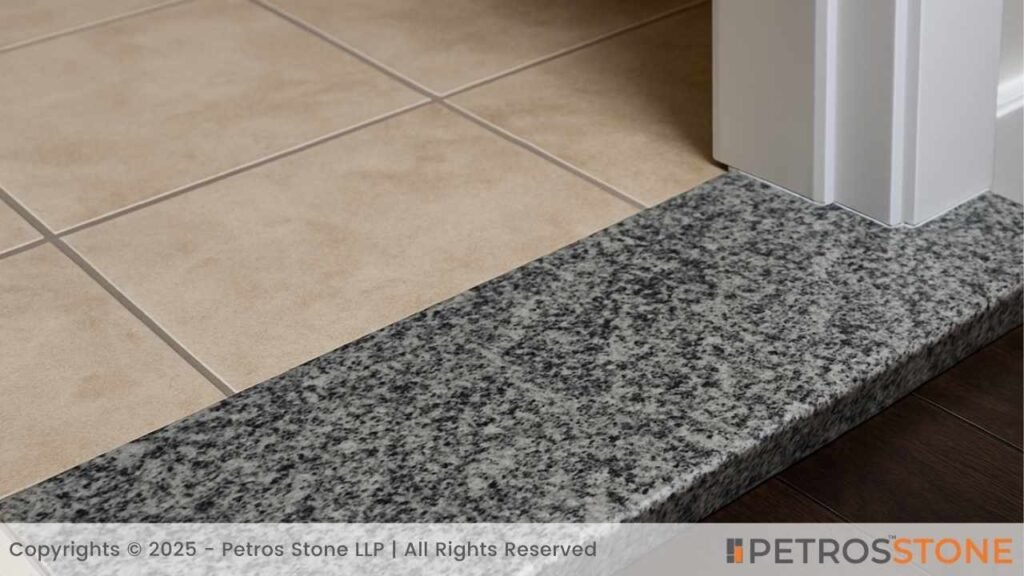
This heavyweight tile is ideal for high traffic or external areas. The Granite’s density and scratch resistance features are its strengths. Moreover, it is available in an endless amount of colors and textural choices.
Pros
- Very durable
- Scratch-resistant
- Good for high traffic and outdoors
Cons
- Heavy
- Harder to work with
Limestone Thresholds
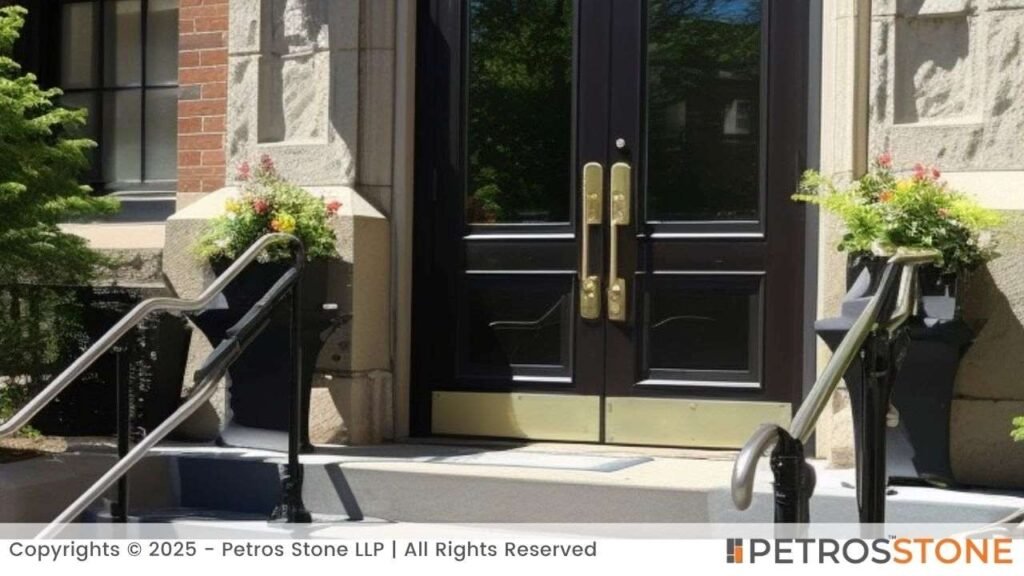
Limestone is a less hard and tonally softer stone than granite or marble. But limestone will offer a warm, as well as natural, appearance to your space. These slabs are more porous and should be considered only for interior spaces, where moisture cannot infiltrate them.
Pros
- Warm Vibes
- Natural look
Cons
- Porous
- Not good for wet areas
Quartzite Thresholds
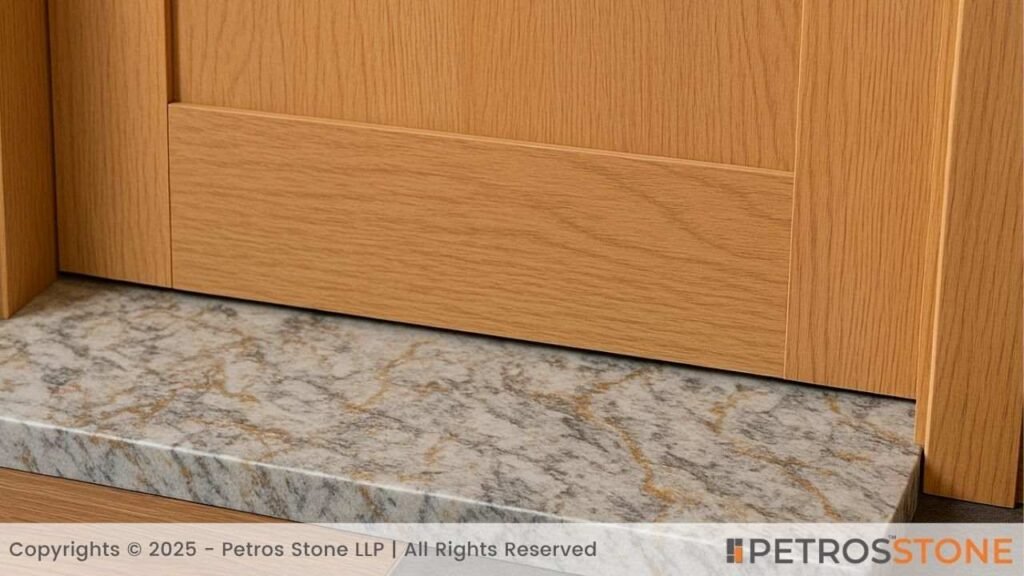
Unlike engineered quartz, quartzite is a natural stone that offers the best of both worlds, i.e, aesthetics and strength. It will resist UV damage, which makes it suitable for interior and exterior applications.
Pros
- Strong
- Beautiful
- UV-resistant
- Good indoors and outdoors
Cons
- Can be expensive
- Hard to install
Price List of Stone Thresholds

Prices of the threshold vary by material, finish, size, and manufacturer, but here’s an average idea of the popular ones:
| Material | Average Price (Per Linear Foot) |
| Marble | USD 10 – 20 |
| Granite | USD 12 – 25 |
| Limestone | USD 8 – 18 |
| Quartzite | USD 15 – 30 |
Factors to Consider When Choosing a Threshold For Home
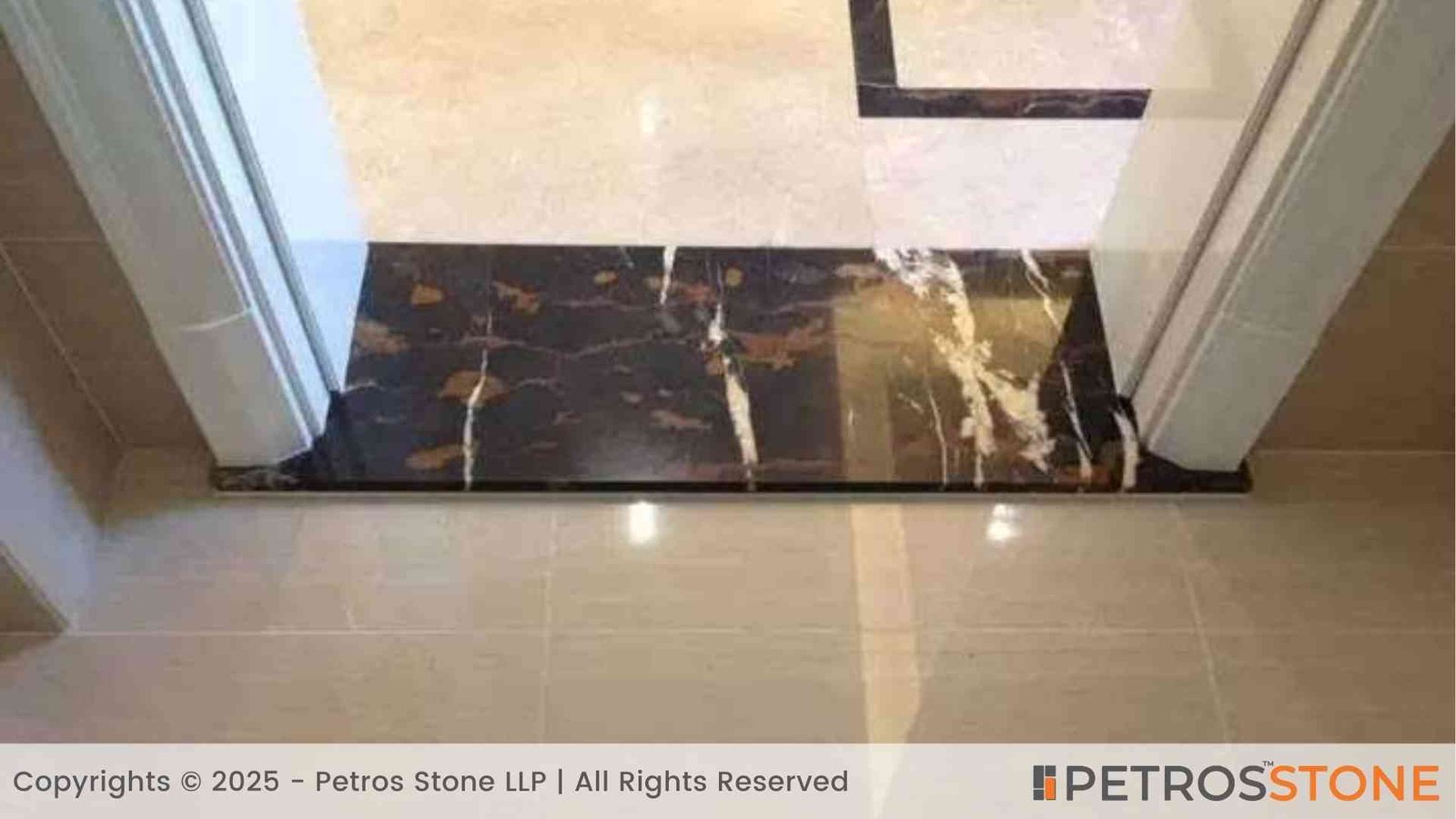
Choosing a threshold is more than just finding the appropriate size. Here are some practical elements to consider:
Door Measurements and Opening Size
The first important step is to measure your door dimensions perfectly. A standard interior door is typically 32 – 36” wide, though exterior doors can be up to 48”. So, the threshold size needs to fit correctly to your door so there are no gaps in the joint, because this may cause water leaks.
Flooring Height and Level Differences
A threshold is typically a transition between different types or heights of flooring. So, you need to carefully measure the height of the variation and determine if you need a threshold with a slope, with a flat edge, or one with a stepped design.
Traffic Volume and Durability Needs
Along with the dimensions, you need to think about where the threshold will be used: a threshold for a bathroom doesn’t need to be as strong or durable as a front entry for your home or a threshold for a commercial space. In high traffic areas, such as an entry, you want to use materials that are strong and durable – such as granite or quartzite. In lower traffic areas, marble or limestone would be acceptable materials.
Climate and Weather Exposure
For exterior doors, you need to think about thresholds that are going to withstand water, temperature changes, and even salt from de-icing, especially if you are in an area of heavy rain or snow. Natural Stone is great for this, especially if you use non-porous stone types, like granite.
Safety and Accessibility Needs
When you are simply accommodating elderly residents, then you must aim for a maximum threshold height of ½ inch. And, always hunt for a threshold with beveled edges that allow a wheelchair or walker to glide over it easily.
Aesthetic Preferences and Style Matching
Your threshold must work with both the floor and the door. For example, a white Carrara marble threshold looks great with modern tiles, and a dark granite threshold suits rustic or traditional.
Installation and Care Considerations
Last but not least! While stone thresholds are durable, they are not maintenance-free. Some types of stone, such as limestone or marble, can easily stain and etch if not sealed properly. So, it is recommended to choose your materials based on your comfort level for care and upkeep.
Get Some Installation Tips

Installing a threshold is a job that requires careful measurement and attention to detail. So, it is worth hiring a professional and using these tips while installing:
- Always measure twice before ordering materials, especially for custom thresholds.
- Use a wet saw with a diamond blade for necessary trim cuts.
- Make sure to seal porous stone such as marble and limestone prior to installation.
- In a wet area, such as a bathroom, always use a waterproof adhesive.
- Make sure that the threshold is leveled and stable, especially over uneven subfloors.
Where to Buy?

You can find stone thresholds at:
- Home improvement stores
- Stone/tile distributors
- Online retailers
- Local Flooring suppliers
For larger selections and competitive prices, importing from India can be a great option. Petros® Stone offers thresholds in many sizes, materials, and finishes — perfect for both residential and commercial needs.
FAQs
What is the size of a threshold?
Thresholds are available in many different sizes to fit different door openings, but most standard sizes usually fit 30, 32, and 36-inch doors.
What is the size of a standard threshold?
A standard threshold is generally 4 to 5 inches in width.
What is the standard size of a door?
Common interior door sizes are 30, 32, and 36 inches wide. And most often, exterior doors are 36 inches.
What is the standard sliding door size?
Sliding doors typically range from 60-72 inches in width.
Summary
Thresholds are narrow strips at the base of doorways that protect flooring edges, prevent water entry, and create smooth transitions between surfaces. The popular materials include marble for elegance, granite for durability, limestone for warmth, and quartzite for premium strength, priced between USD 8 – 30 per linear foot. So, choosing the right threshold depends on door size, floor height difference, traffic volume, climate, and design preferences.
Key Takeaways
- Thresholds typically come in standard widths of 2”-6” to accommodate regular door widths.
- Stone thresholds are attractive and practical, especially for making transitions and in wet areas.
- Choose the right material (with perfect thickness and finish) for the threshold based on your floor plan, climate, and frequency of use.
- Proper installation and maintenance will extend the life of your threshold.
Feel free to get in touch for a free consultation, quote, and get a detailed understanding from our experts here at Petros®. Visit https://petrosstone.com/ or call +91-8446360361 and WhatsApp

Hello!
I’m Varsha, with a deep interest in architecture and years of content writing experience, I explore how natural stones like granite and marble shape beautiful, functional spaces. At Petros® Stone, I share insights that help readers appreciate the design potential and timeless appeal of stone.
Brown Granite
White Galaxy Granite
Blue Bahia Granite
Silver Cloud Granite
Black Pearl Granite
Dallas White Granite





